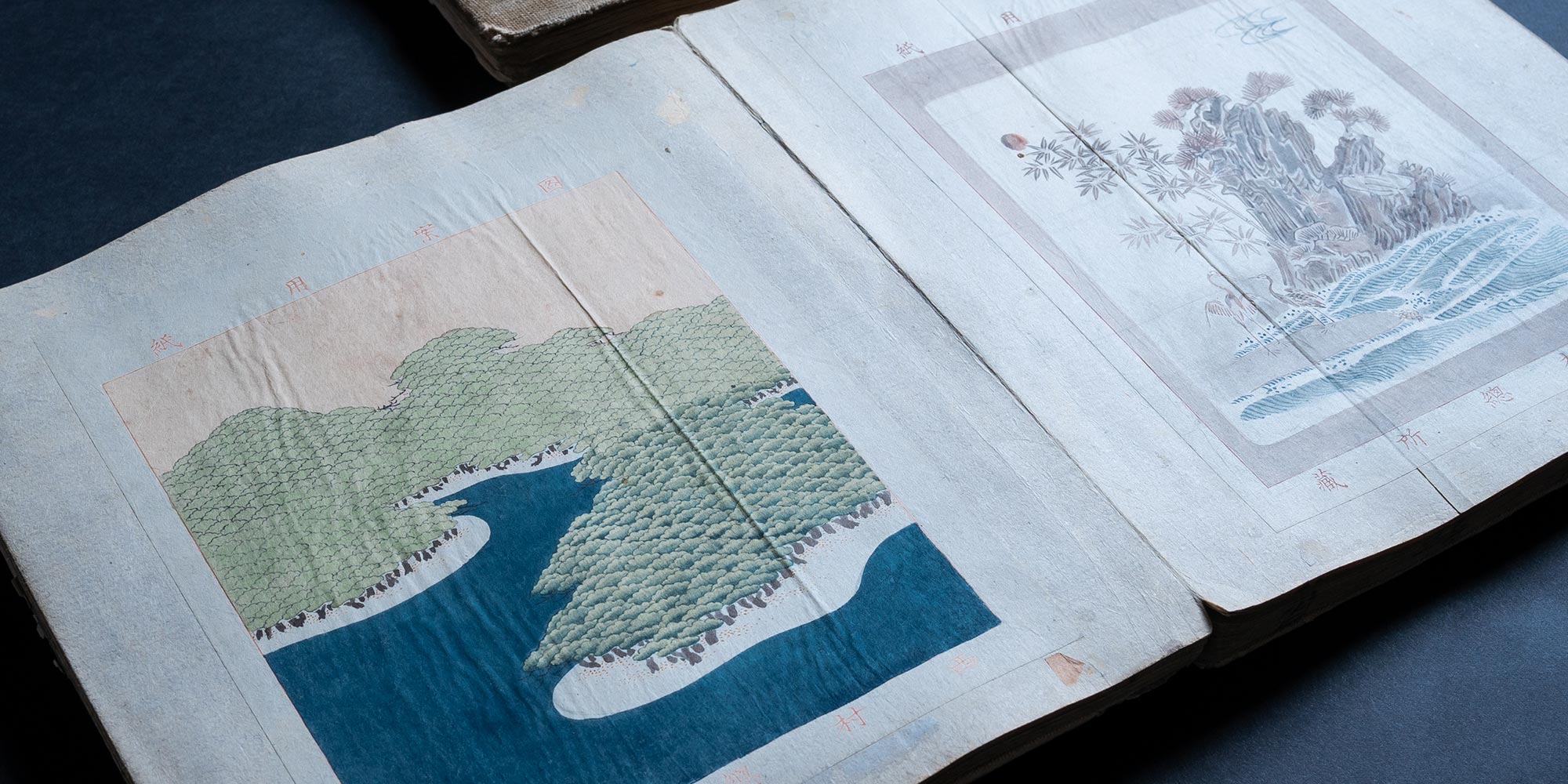
研究所について
About the Institute
ご挨拶Director Message
千總文化研究所は、千總が持つ染織技術、美術品、歴史資料といった様々な有形・無形の文化財を多角的に捉え、新たな価値の創造と文化芸術の振興への寄与を目指し設立されました。
千總が「研究所」を創設いたしますのは、460余年の歴史の中で、2度目であります。一度目は第二次世界大戦下、1940年に「奢侈品等製造販売制限規則」が発布されたことを受けてつくられた「西村總染織研究所」でした。贅沢なものを作れない、売れない時代に職人の技術と生活を守るために、政府の許可を得て研究所を設立し、限られた資材を投じてものづくりを続けました。
昨今は、溢れるほどにモノが豊かな時代にあり、人やモノの交流も一層グローバルになり、人々の価値も多様化しています。さらに人工知能の急速な発展に伴い、人の文明は大きな変革の時を迎えています。
伝統は守るものではなく、創るものであります。千總文化研究所は、研究者、技術者、アーティストとともに、学問や産業の分野を横断する知と創造のプラットホームを築き、日本の文化を未来へつないで参ります。
代表理事 西村 總左衛門
The Institute for Chiso Arts and Culture was established with the aim of striving to create new values and promote cultural arts by taking a multifaceted view of Chiso’s various tangible and intangible cultural property such as textiles, art works, historical documents.
The Institute for Chiso Arts and Culture is a second institute founded by Chiso. The first institute, Nishimura Sō Senshoku Kenkyūsho, was founded during World War II in response to the issuance of Shashihin Tō Seizō Hanbai Seigen Kisoku (regulations restricting the production and sale of luxury items) in 1940. To protect the livelihood of the artisans and their techniques during the time when producing and selling luxury items were prohibited. Chiso founded the first institute under the approval of Government and continued to manufacture goods with scarce materials.
Today we live in the time with abundant consumer goods and people with more diverse values as people and things interact far more globally. Additionally, artificial intelligence that is undergoing rapid advances is now about to revolutionize our civilization.
Tradition is not something that is simply to be preserved, but is something to be created.
The Institute for Chiso Arts and Culture, together with researchers, engineers, and artists will provide a platform of knowledge and creativity crossing the boundaries of academic and industrial fields to pass down the Japanese culture to the future generations.
Nishimura Sōzaemon
Representative Director,
Institute for Chiso Arts and Culture
活動内容Missions
活動方針 Vision
千總文化研究所は、「京都」「技術」「美」の三つのテーマを柱とし、調査研究、教育普及活動を実施しています。
千總は創業以来「京都」において、町政を担ったり、京都画壇と染織品の共同製作に取り組んだりと、「京都」の文化と町の発展とともに歩んできました。そして宮家、寺院に装束を納める法衣商から友禅染の着物を手掛ける呉服商へと、商いの軸足を変えながらも「美」を求め、染織の「技術」を継承してきました。その軌跡を辿ると、「京都」「技術」「美」の三つが、互いに密接に結びつきながら、それぞれが種々の学問や産業分野と関係しあっていることが見えてきます。
「京都」「技術」「美」を柱に千總の有形・無形の文化財を包括的に研究することが、一つの専門分野から調査するだけでは見えにくい物事の関係性を紐解き、文化と社会のつながりを浮き彫りにすることに繋がります。そして、その研究成果を皆様と共に考え、社会へ還元していくことで、新たな文化の創造を目指します。
The Institute for Chiso Arts and Culture conducts researches and educational activities based on the three research themes: Kyoto, technique, and beauty.
Since its establishment, Chiso has developed together with the culture and community of Kyoto by serving its role in administering town and collaborating with artist of Kyoto painting circle in the production of textiles. While changing the focus of its business from a religious vestments merchant who delivered costumes to the imperial family and temples to a kimono merchant who products yūzen-dyed kimono, Chiso continued to pursue beauty and pass on the techniques of textile products. Following the track of its history, we can see that the three themes of the Institute, Kyoto, techniques, and beauty closely relate to one another, and each gets involved in various disciplines and industrial fields.
Comprehensive studies of Chiso’s tangible and intangible cultural properties based on the themes of Kyoto, techniques and beauty will help to unravel the relationships between things that are hardly found by a single perspective. We also aim to create a new culture by considering the results of such researches together with everyone and returning them to society.
活動実績Activity Reports
2021年度活動実績(PDF/667KB)
2020年度活動実績(PDF/404KB)
2019年度活動実績(PDF/537KB)
2018年度活動実績(PDF/506KB)
2017年度活動実績(PDF/399KB)
組織概要Overview the Institute
| 名称 | 一般社団法人千總文化研究所 Institute for Chiso Arts and Culture |
|---|---|
| 設立日 | 2017年3月30日 |
| 所在地 | 〒604-8166 京都府京都市中京区三条通烏丸西入御倉町80 (株)千總内 Google Map |
| 電話 | 075-211-2531 |
| FAX | 075-211-2533 |
| 代表理事 | 代表理事 西村總左衛門 (株式会社千總 取締役会長) |
|---|---|
| 理事 | 内藤 邦男 (⼀般財団法⼈⼤⽇本蚕⽷会 会頭) 林 史己 (公益社団法人日本図案家協会 会長) 森口 邦彦 (染色家・重要無形文化財 友禅 保持者) |
| 監事 | 河添 豊弘 (株式会社千總 総務部⻑) |
| 所長 | 加藤 結理子 |

